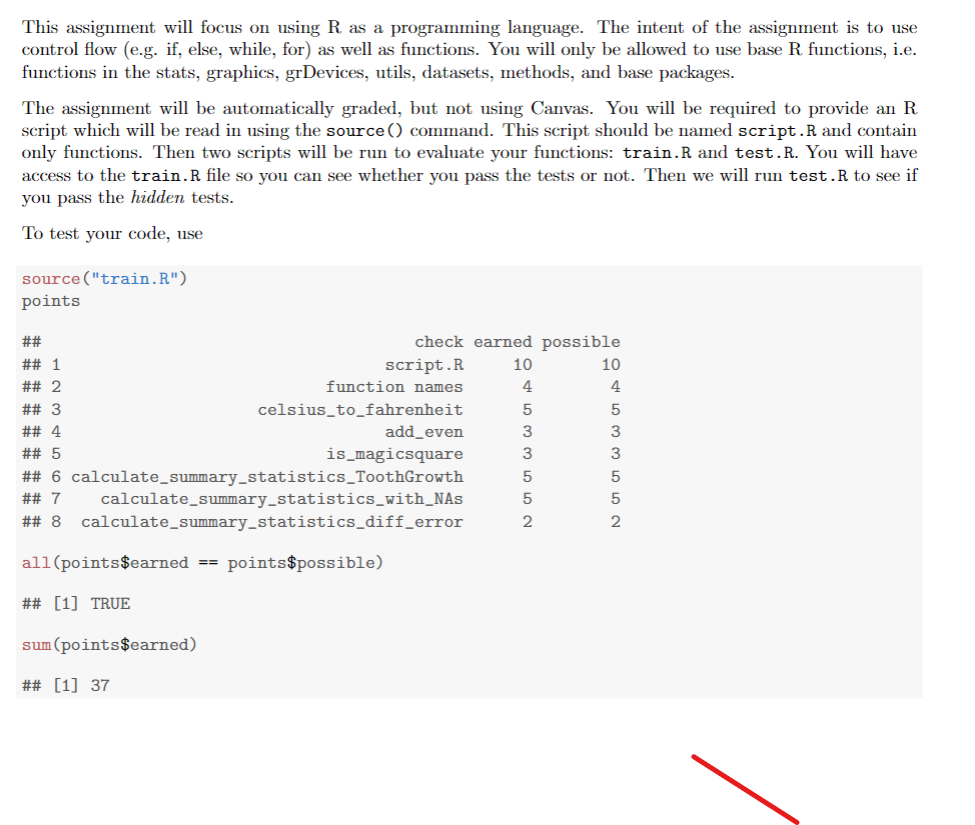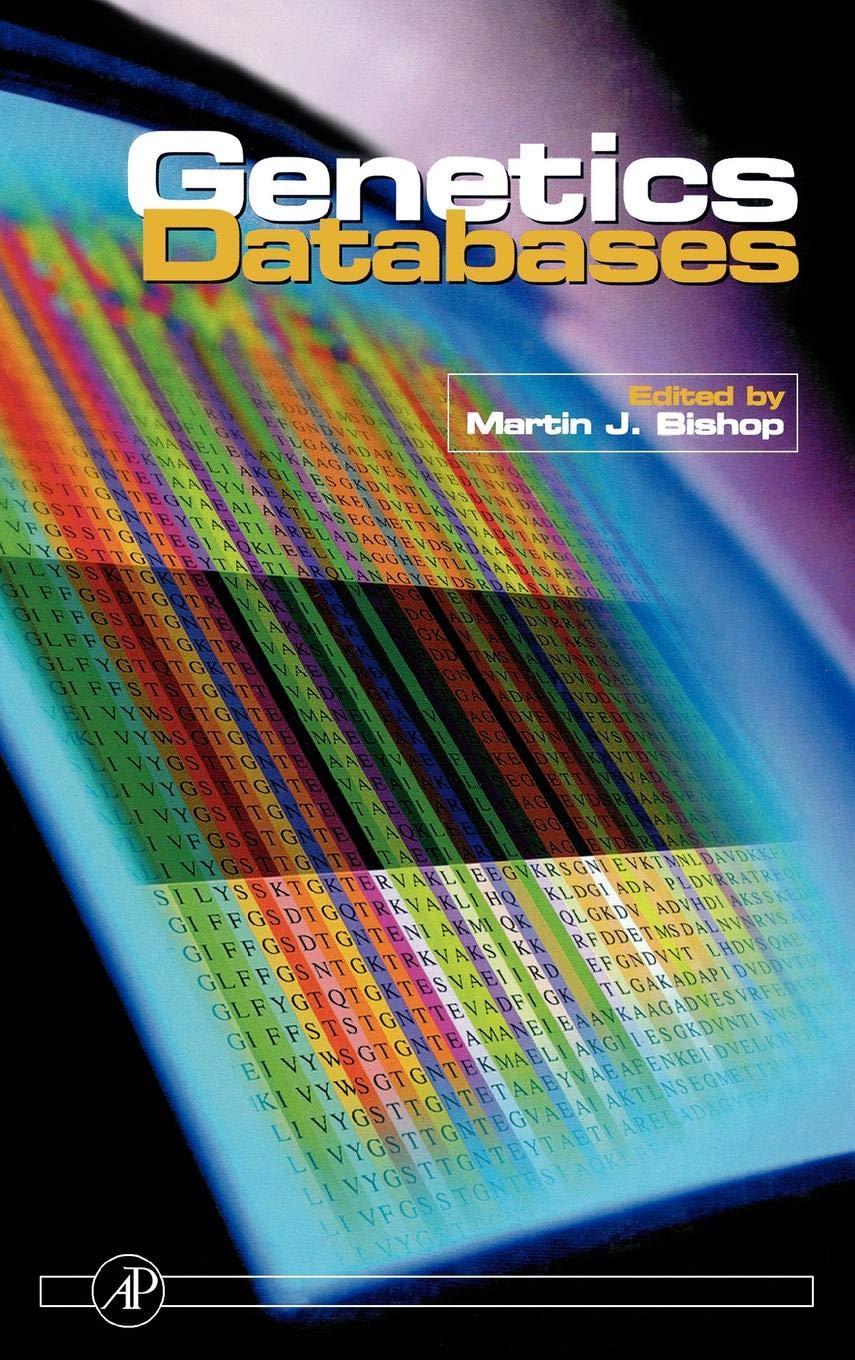Question
CODE in R Train.r: # Delete everything out of the environment rm(list=ls()) # Does the script use require, library, or :: package? # rl if
CODE in R
Train.r:
# Delete everything out of the environment
rm(list=ls())
# Does the script use require, library, or :: package?
#
rl
if (any(grepl("library", rl)) |
any(grepl("require", rl)) |
any(grepl("::", rl, fixed = TRUE))) {
stop("This script may use a non-base package and therefore will receive a score of 0.")
}
# Even if you can get around this issue (by, say, adding the package to your
# .Rprofile file), the script will not work on our computer and therefore you
# will not receive points.
#
# Load functions
source("script.R")
# Points
points
earned = 10,
possible = 10)
# Check for the functions
fxns
"add_even",
"calculate_summary_statistics",
"is_magicsquare")
pts
for (i in seq_len(length(fxns))) {
pts
}
points
data.frame(check = "function names",
earned = pts,
possible = length(fxns)))
#############################################################################
# Check celsius_to_fahrenheit results
#############################################################################
celsius
fahrenheit
points
data.frame(check = "celsius_to_fahrenheit",
earned = sum(celsius_to_fahrenheit(celsius) == fahrenheit),
possible = length(fahrenheit)))
#############################################################################
# Check add_even results
#############################################################################
n
r
stopifnot(length(n) == length(r))
pts
for (i in seq_len(length(n))) {
pts
}
points
data.frame(check = "add_even",
earned = pts,
possible = length(n)))
#############################################################################
# Check is_magicsquare
#############################################################################
squares
matrix(c(2, 7, 6,
9, 5, 1,
4, 3, 8),
byrow = TRUE,
nrow = 3, ncol = 3),
matrix(c(1, 14, 14, 4,
11, 7, 6, 9,
8, 11, 10, 5,
13, 2, 3, 15),
byrow = TRUE,
nrow = 4, ncol = 4),
matrix(c(46, 8, 16, 20, 29, 7, 49,
3, 40, 35, 36, 18, 41, 2,
44, 12, 33, 23, 19, 38, 6,
28, 26, 11, 25, 39, 24, 22,
5, 37, 31, 27, 17, 13, 45,
48, 9, 15, 14, 32, 10, 47,
1, 43, 34, 30, 21, 42, 4),
byrow = TRUE,
nrow = 7, ncol = 7)
)
ms
pts
for (i in 1:length(squares)) {
pts
}
points
data.frame(check = "is_magicsquare",
earned = pts,
possible = length(ms)))
#############################################################################
# Check calculate_summary_statistics() results
#############################################################################
my_near
abs(a-b)
}
# ToothGrowth
s
pts
my_near(s$n, 60),
my_near(s$m, 18.81333),
my_near(s$s, 7.649315),
my_near(s$lcl, 16.83731),
my_near(s$ucl, 20.78936)
)
points
points,
data.frame(
check = "calculate_summary_statistics_ToothGrowth",
earned = pts,
possible = 5)
)
# missing values
vector_with_NAs
s
pts
my_near(s$n, 10),
my_near(s$m, 5.5),
my_near(s$s, 3.02765),
my_near(s$lcl, 3.334149),
my_near(s$ucl, 7.665851)
)
points
points,
data.frame(
check = "calculate_summary_statistics_with_NAs",
earned = pts,
possible = 5)
)
# different significance level
s
pts
my_near(s$lcl, 3.744928),
my_near(s$ucl, 7.255072)
)
points
points,
data.frame(
check = "calculate_summary_statistics_diff_error",
earned = pts,
possible = 2)
)



Step by Step Solution
There are 3 Steps involved in it
Step: 1

Get Instant Access to Expert-Tailored Solutions
See step-by-step solutions with expert insights and AI powered tools for academic success
Step: 2

Step: 3

Ace Your Homework with AI
Get the answers you need in no time with our AI-driven, step-by-step assistance
Get Started


